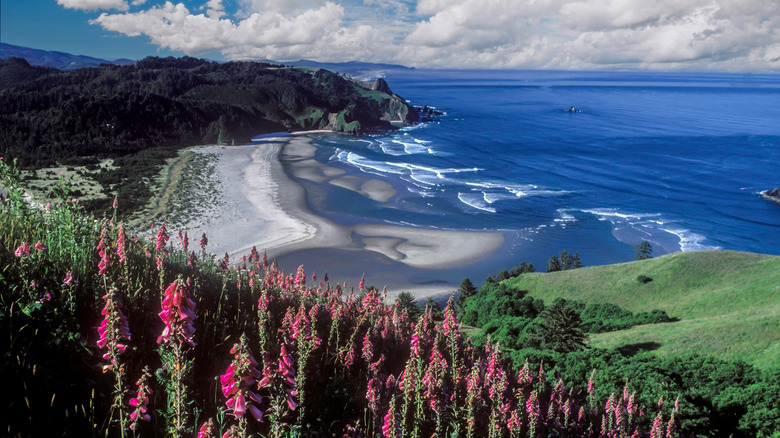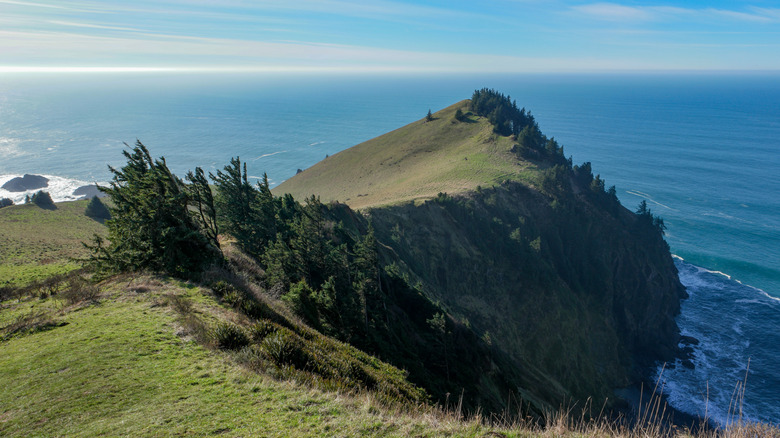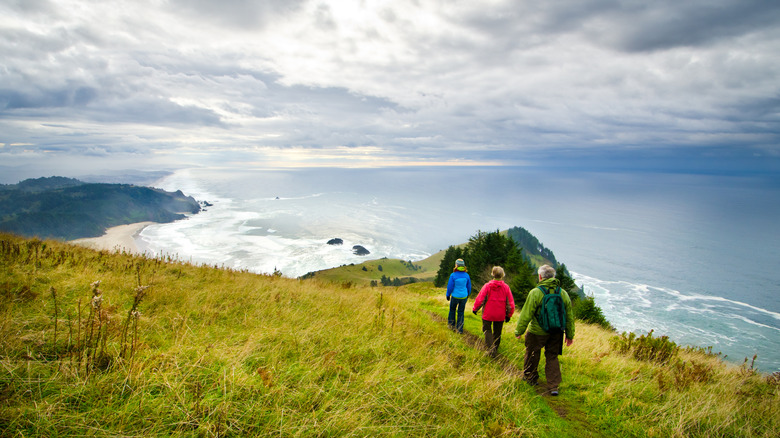One Of Oregon's Most Majestic Coast Destinations Is A Dramatic Headland Full Of Diverse Flora And Fauna
When you're looking for scenic shores in the United States, head right to the remote beauty of the Oregon Coast. Stretching for 360 miles (580 km) between the border of California and the Columbia River (also, the Washington border), the rugged seaside cliffs are interspersed with lush forests, hidden coves, sandy beaches, and rural towns. It's hard not to find quintessential scenic views, but one such place that's more off-the-beaten-path is Cascade Head. This headland, hidden along the Oregon Coast, feels like the end of the world, complete with the barking of sea lions, the crashing of the surf, and the pounding of the many cascades as they pour over the cliff into the ocean (the inspiration for the name).
Situated in the center of the Oregon coast, between the scenic Tillamook and its renowned cheese and Lincoln City, Cascade Head is part of a 102,110-acre protected biosphere region, which includes a research area, the Salmon River estuary, an experimental forest, the Cascade Head Preserve, and a marine reserve protecting part of the ocean. Cascade Head is best viewed by the nearby hiking trails to appreciate the stunning, remote beauty and natural wonders. While much of coastal Oregon feels removed from civilization, on Cascade Head, you will truly be able to immerse in nature.
A scenic spot on Oregon's picturesque coast
Cascade Head is located just north of Lincoln City, an artsy haven on Oregon's scenic coast with breathtaking beaches. Although the best views of Cascade Head and its surroundings are reached best by foot, the area is about a 30-minute drive from Lincoln City, about two hours from Portland (home to Oregon's biggest airport), and an hour from Tillamook.
There are three main options for hiking the headland: the Nature Conservancy Trail, the Upper Viewpoint Trail, and the Harts Cove Trail. The easiest trail, Upper Viewpoint, is an easy one-mile trek through the forest to a picture-perfect meadow overlooking the headland. For waterfalls and the sound of sea lions, take the harder, 5.3-mile trek to Harts Cove, and for expansive views both north and south, try the 4.2-mile Nature Conservancy Trail.
Note that picking wildflowers, camping, fires, hunting, bikes, and dogs are banned at Cascade Head. One ideal place to stay nearby is Devil's Lake State Recreation Area, especially in one of the classic Oregon Coast yurts. Harts Cove and Upper Viewpoint trails are open seasonally, between July and December, while the Nature Conservancy Trail is open year-round.
The wildlife, wildflowers, and wild sea views of Cascade Head
Cascade Head is part of the Cascade Head Biosphere Region, which includes seven miles of coastline, coastal prairie, and protected waters. It also includes the newly restored Salmon River estuary, which can be viewed from select spots on the Cascade Head trails. The biosphere region is home to many different types of wildlife, from Coho salmon, cougar, elk, osprey, sea lions, seals, and gray whales. Humpback whales can also occasionally be seen from land, passing by during their annual migration.
The unique coastal prairie also hosts a rainbow of wildflowers throughout the year, especially in the spring and summer. Keep an eye open for yarrow, foxglove, and Indian paintbrush, to name a few. Just remember — take nothing but pictures, leave nothing but footprints (in other words, don't pick the flowers).
Pro travel tip: Cascade Head is a stellar spot to stop while cruising along the flavorful and tempting Oregon's Coastal Food Trail. Nearby Tillamook and Neskowin (about 20 minutes north of Cascade Head) are famous for their cheese, and various bays around the headland are renowned for their seafood, like Dungeness crab.


